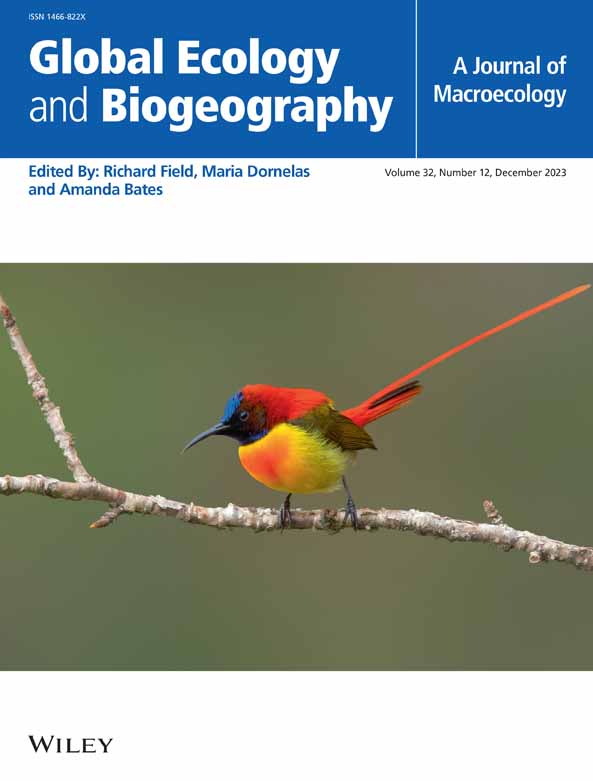Global Enhancers and Constraints of Alien Range Size in Mammals: The Roles of Species Attributes, Invasion History and Ecological Contexts
Abstract
Aim
The rapid global expansion of alien invasion fronts is profoundly impacting native ecosystems. Understanding the enhancers and constraints behind the range size of alien species is crucial for mitigating biodiversity loss. While mammals are among the most well-studied taxa worldwide, their global invasion ecology remains under-investigated. In this study, we aimed to examine the potential relationships between their alien range size and species attributes, invasion history and environmental conditions.
Location
Global.
Time Period
From prehistory to present.
Major Taxa Studied
Terrestrial mammals.
Methods
We utilised the global Distribution of Alien Mammals database and linear mixed models to explore the relationships between alien range size and species attributes, introduction effort, residence time, human disturbance, native mammal richness, regional community composition and climate conditions across zoogeographic realms.
Results
Alien mammals may achieve larger range sizes when introduced via multiple pathways to numerous distinct locations, and have longer residence times, large native ranges and high potential for fast population growth. Conversely, they face constraints when introduced to islands, exhibit specialised ecology or encounter areas with high human disturbance. Climate emerged as a key factor, with temperature seasonality and climate match positively influencing alien range size. Contrary to our expectations, alien range size was positively correlated with native mammal richness, although it was constrained when placed within their native zoogeographic regions or realm, suggesting a zoogeography-dependent effect of biotic resistance.
Main Conclusions
We elucidated how invasion history, environmental conditions, and species attributes influenced alien range size in mammals. Our findings showed that fast-growing generalists introduced to multiple locations within climates matching their native niche can achieve large alien ranges, even in natural environments with high native mammal richness. Management efforts should prioritise these species, particularly if originating from distant zoogeographic units with different communities, and use climate match to guide management actions and halt mammal invasion fronts across realms.


 求助内容:
求助内容: 应助结果提醒方式:
应助结果提醒方式:


